Introduction
Zoning laws and land use controls play a crucial role in shaping our urban environments, dictating what can be built where and influencing housing availability and affordability. Originally established to organize cities and assign specific functions to different zones, these regulations have evolved over time and are now key in managing urban growth and housing development. However, statistical analysis reveals that these laws can inadvertently restrict housing supply, leading to artificial scarcity and increased housing costs.
The urgent need for efficient land use is underscored by the current shortfall of 4 million homes in the U.S. and projections of an additional 16 million homes needed in the next decade. Moreover, zoning laws have implications beyond housing, impacting global climate concerns as well. Urban sprawl, fueled in part by these regulations, is responsible for one-third of global greenhouse gas emissions.
To mitigate this, there is a growing emphasis on promoting compact, mixed-use developments that reduce travel distances, enhance energy efficiency, and conserve natural resources. As zoning laws continue to evolve, they are being scrutinized for their social impact, with historical case studies highlighting the enduring influence of zoning on societal dynamics. The Provincial Planning Statement of 2024 exemplifies a modern approach to land use planning, emphasizing housing provision, economic growth, and infrastructure planning while safeguarding the environment.
By understanding and reevaluating zoning laws, we can strive to create equitable, vibrant, and sustainable urban environments.
Understanding Land Use Controls and Zoning Laws
Zoning laws serve as a critical framework for urban development, delineating the permissible uses for each parcel of land within a municipality. Initially established in early 20th century America with ordinances such as those in Los Angeles (1904) and New York City (1916), these regulations were designed to organize the urban landscape by assigning specific functions to various zones, such as residential, commercial, or agricultural. While the original motivations for zoning may have had discriminatory underpinnings, today's zoning laws are pivotal in managing urban growth and housing development. They set parameters for building types, usage, and density, thus influencing the availability and affordability of housing.
Statistical analysis reveals that these regulations can inadvertently restrict housing supply by limiting the number of residential units within a given area. This artificial scarcity can prevent market forces from reducing housing costs in response to increased supply, highlighting a potential area for reform. For instance, the current shortfall of 4 million homes in the U.S. due to decades of under building underscores the impact of such constraints. Projections suggest that an additional 16 million homes may be required to accommodate future growth over the next decade, indicating the urgent need for efficient land use.
The impact of zoning extends beyond city planning to encompass global climate concerns. Urban sprawl, fueled in part by zoning regulations, is implicated in one-third of global greenhouse gas emissions. The promotion of compact, mixed-use developments can mitigate this by reducing travel distances, enhancing energy efficiency, and conserving natural resources and carbon sinks.
Amidst this backdrop, the Provincial Planning Statement (PPS) of 2024 exemplifies a modern approach to land use planning. It emphasizes key issues such as housing provision, land development for economic growth, and infrastructure planning, while safeguarding environmental resources and steering development clear of hazards. This policy aims to align municipal decision-making with provincial objectives, fostering a cooperative effort in shaping sustainable communities.
As these laws evolve, they continue to be scrutinized for their social impact. Historical case studies, such as the intersection of race and planning in landmark legal cases from Plessy v. Ferguson to Shelley v. Kraemer, highlight the enduring influence of zoning on societal dynamics. Contemporary discourse invites the public to examine and challenge local laws that may impede community development or harm residents' lives. By understanding and reevaluating our zoning laws, we can strive to create equitable, vibrant, and sustainable urban environments.
Mechanisms by Which Land Use Regulations Increase Housing Costs
Land use controls, such as zoning and other regulations, have a direct bearing on the availability and cost of housing. These rules dictate the density, type, and location of housing that can be constructed, often leading to a constrained housing supply. An analysis of these dynamics reveals that when housing supply lags behind demand, the result is an escalation in housing prices, impacting affordability for both buyers and renters. For instance, research highlights that even modest reforms in land use regulations can lead to a mild but statistically significant increase in housing supply, with evidence showing a nationwide uptick of 0.8% in the medium term.
Dr. Ryan Greenaway-McGrevy's study in Auckland, New Zealand, serves as a case in point. After zoning regulations were relaxed, the city witnessed the construction of over 20,000 additional homes. Moreover, these regulatory adjustments not only address housing shortages but also have broader implications for urban development and environmental sustainability. By promoting compact, mixed-use communities, they reduce travel distances, increase energy efficiency, and conserve land, aligning with climate action goals.
However, the journey from policy reform to tangible outcomes in housing availability and pricing is not straightforward. Experts argue that while private-sector home builders are crucial to resolving affordability issues, they can only be effective if exclusionary zoning is removed. Furthermore, the intricacies of local regulations and their varying effects on housing markets underscore the complexity of measuring and understanding the relationship between regulation and housing costs. The multifaceted nature of regulations means that cities might reach the same low housing production outcomes through different regulatory paths, making the task of crafting effective reforms all the more challenging.

Impact on Housing Prices and Affordability
Zoning laws and land use regulations are pivotal factors influencing housing prices and availability. In metros with stringent regulations, housing costs typically escalate, reflecting the complexity and constraints of developing new homes. For instance, a study of Auckland, New Zealand, following the relaxation of zoning regulations, revealed that easing such restrictions can lead to a substantial increase in housing, with over 20,000 additional homes constructed. Conversely, a report by the Urban Institute indicates that nationwide, policies relaxing land use restrictions only modestly increase housing supply by an average of 0.8% over a medium term of 3 to 9 years. This suggests that while deregulation can stimulate housing development, the impact on affordability might be limited without additional interventions to promote affordable housing construction.
Furthermore, the experience of Oakland, California, signifies the relationship between housing supply and affordability. The city witnessed a significant 7.2% reduction in rent prices, the most pronounced decrease across America's largest cities, after introducing new housing into the market. This trend underscores the influence of supply on housing affordability. Similarly, in Minneapolis, the engagement of diverse stakeholders in land use discussions, including those adversely affected by restrictive zoning, was instrumental in the passage of progressive zoning reforms. This collaboration, driven by concerns over housing affordability, racial justice, and environmental considerations, has begun to show early signs of influencing building rates and housing prices.
Ultimately, any discourse on regulation and housing costs must acknowledge the diverse array of regulations at play, the difficulty in measuring their impact consistently, and the opaque mechanisms by which they affect pricing. This complexity is highlighted by variations in local regulations that can achieve similar outcomes of restricted housing production, such as differing lot sizes, parking requirements, or discretionary review processes that can slow or impede development. Addressing high housing costs necessitates a nuanced understanding of these regulatory frameworks and their practical implications on housing supply and affordability.
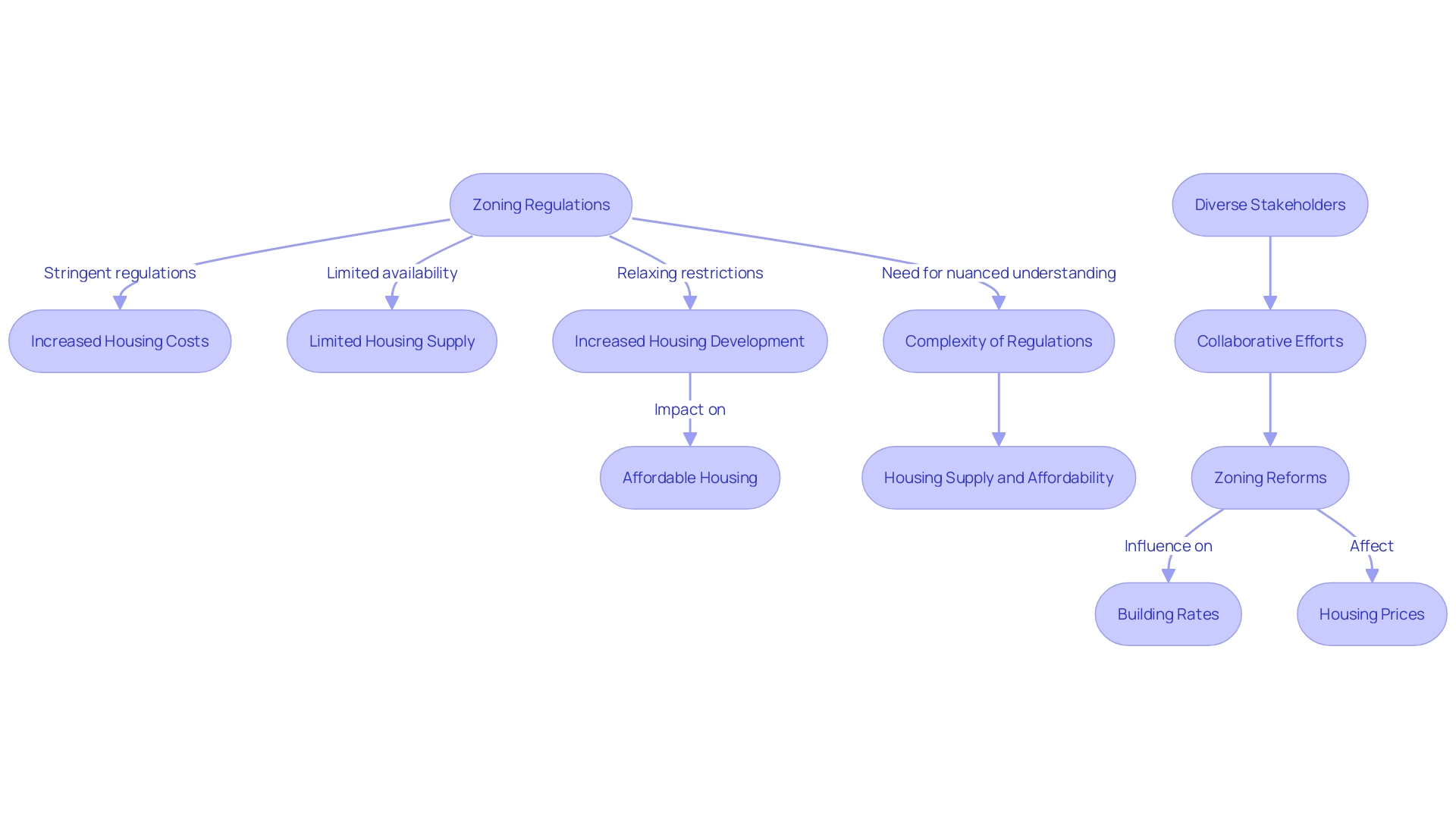
Effects on Urban Form and Density
Zoning laws and land use controls are pivotal in shaping the urban landscape, influencing the distribution of residential, commercial, and industrial zones. The strategic application of these regulations has the power not only to foster lively, diverse communities but also to mitigate issues such as urban sprawl and segregation. For example, Auckland's significant zoning reform led to the creation of over 20,000 homes, demonstrating the profound impact of such policies on city development.
In Minneapolis, groundbreaking zoning reforms were propelled by a focus on housing affordability, environmental concerns, and racial justice, with an emphasis on involving those typically marginalized in land use discussions. These reforms have consequently begun to reshape the city's housing market and infrastructure.
Zoning in North America is notably distinct for its rigid separation of land uses, unlike the more flexible approaches seen in other parts of the world. Yet, this rigidity often contributes to high housing prices due to the complexity and variety of local regulations that can stifle housing production.
In light of environmental and social considerations, urban planners are urged to integrate these aspects into their strategies, revising zoning codes to align with these values and prevent displacement from more expensive housing developments. Michael Wicki's research emphasizes the importance of public acceptance in urban densification, recognizing the intrinsic value of community engagement in creating vibrant cities.
As cities contemplate new construction and renovations, they face a critical choice: continue with the predominant trend of replacement constructions or explore 'softer' densification methods. In Zurich, for example, replacement constructions far exceed gentler methods of increasing urban density, a trend that reflects the challenges and opportunities cities face in managing growth.
The conversation around land use and zoning is ever-evolving, with innovative concepts like 'The Line' in Saudi Arabia pushing the boundaries of urban design. This trillion-dollar linear city aims to house 9 million residents within a narrow, towering structure stretching over 170 kilometers. Such ambitious projects invite scrutiny and debate, highlighting the complex interplay between urban design, sustainability, and societal needs.
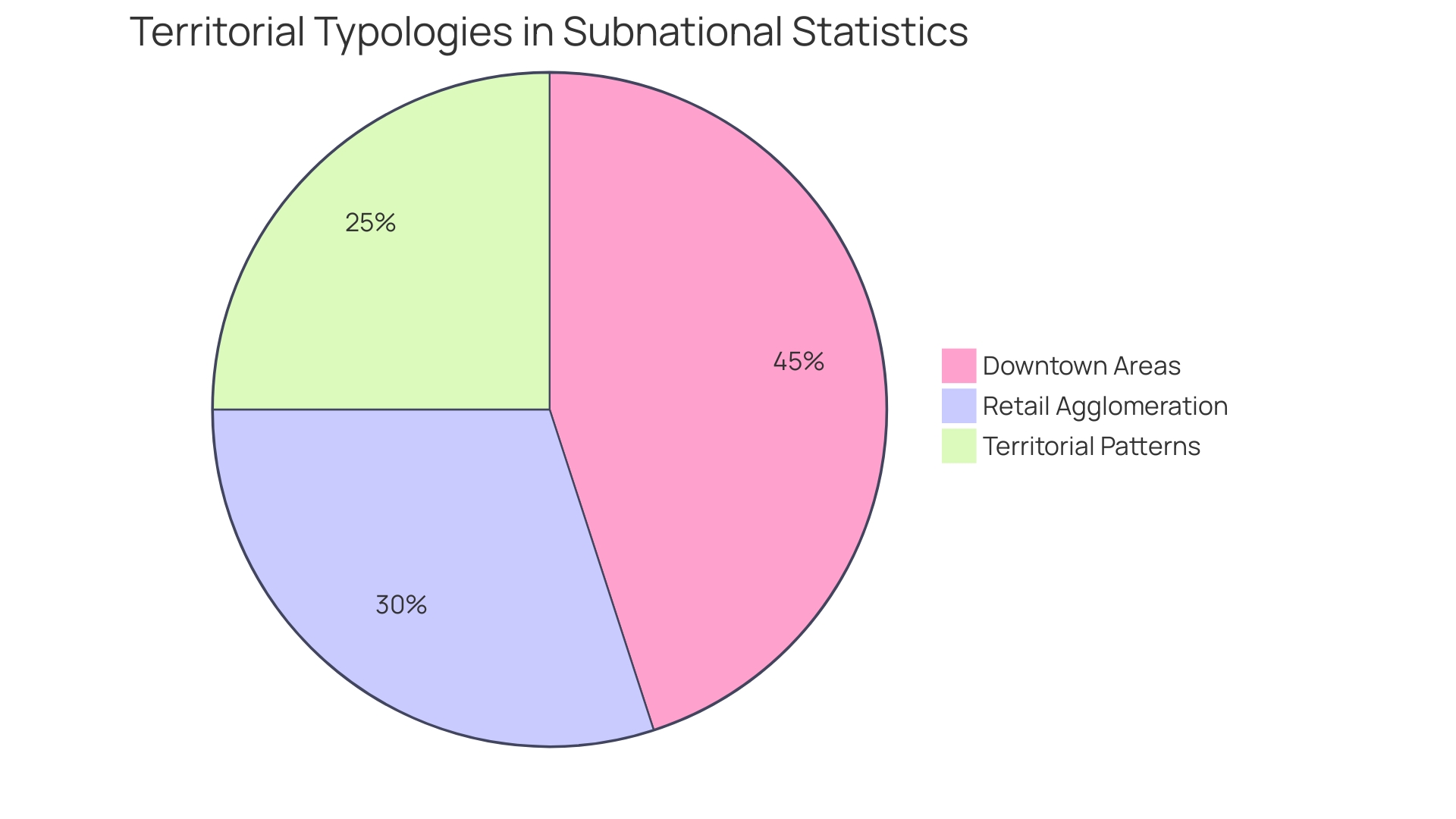
Case Studies: Examples from Different Regions
Land use controls are a dynamic field that significantly impact real estate development, and examining case studies is essential for comprehending the intricate balance between regulation and growth. For instance, Auckland, New Zealand, experienced a substantial increase in housing after zoning regulations were loosened, as evidenced by Dr. Greenaway-McGrevy's research which indicated an addition of over 20,000 homes. This growth occurred despite the fact that not all projects with building consents were completed, signifying a strong correlation between zoning policy changes and actual construction output.
Moreover, the National Environmental Policy Act (NEPA) and its state equivalents, such as CEQA, demonstrate the double-edged nature of land use regulations. While originally intended to ensure transparency regarding environmental impacts, these laws have also resulted in extended delays and elevated compliance costs. These hurdles highlight the complex trade-offs between environmental protection, housing availability, and the economic feasibility of development projects.
Urban sprawl, responsible for a significant portion of greenhouse gas emissions, underscores the critical role of efficient urban planning in combating climate change. Well-designed urban environments can lead to reduced travel distances, less car dependence, and more sustainable living spaces. However, the prevalence of zoning laws favoring detached single-family housing challenges the shift towards more compact, mixed-use communities that could provide a multitude of benefits, from enhanced health outcomes to greater housing affordability.
In conclusion, real-world examples and data illustrate the profound influence land use regulations have on shaping our cities and the environment. They bring to light the necessity of thoughtful, flexible zoning laws that can adapt to changing societal needs and foster sustainable development.
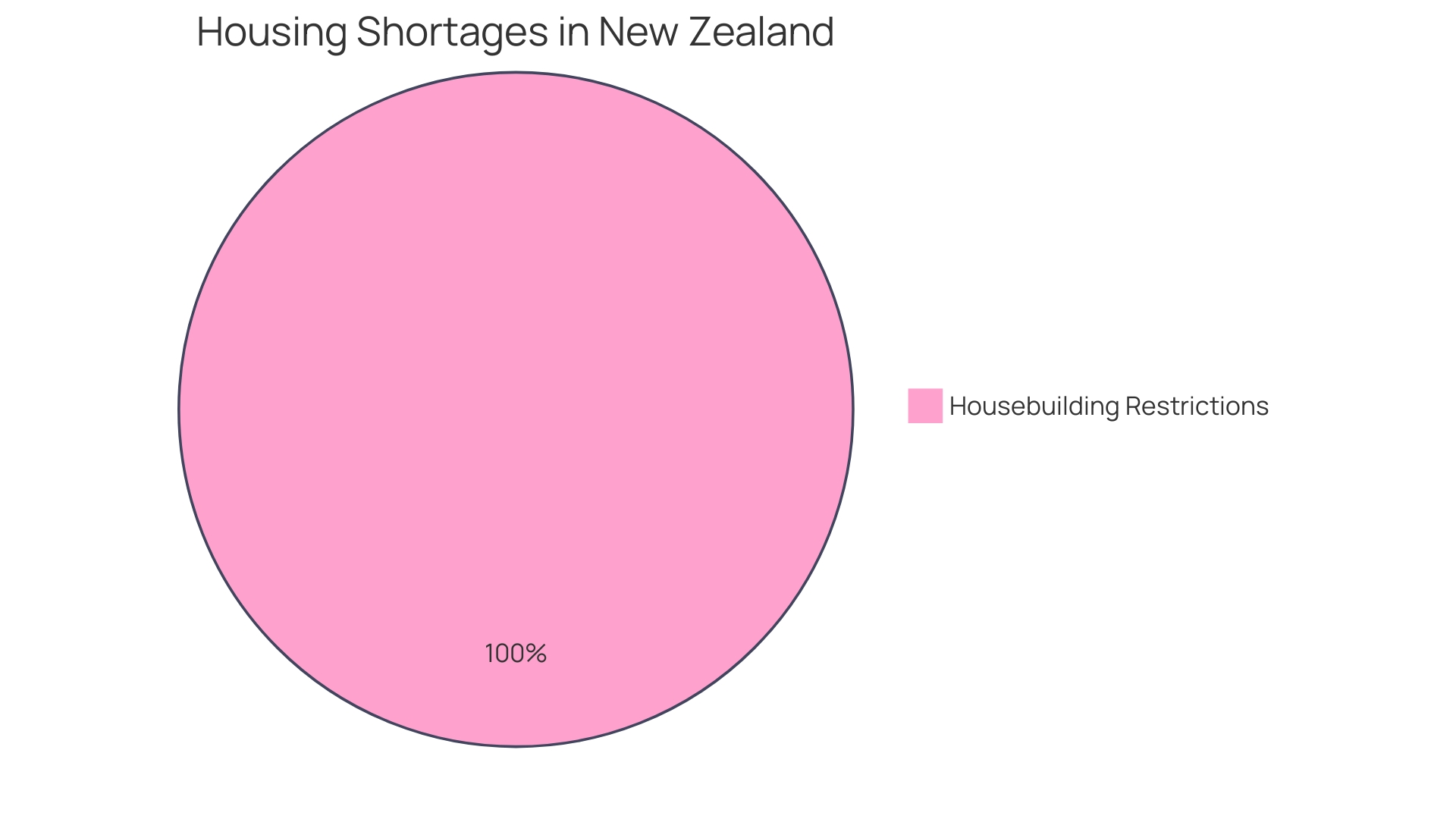
Challenges and Complexities in Enforcing Land Use Regulations
Local governments face a multifaceted challenge when enforcing land use regulations. These complexities are evident in the need to maintain the unique character of neighborhoods while also fostering economic development and respecting property rights. The delicate balance required often necessitates a multidisciplinary approach, involving developers, community members, and urban planners to interpret and implement these regulations effectively.
For instance, the increase in catastrophic wildfires in California over the past two decades underscores the unpredictable nature of risk and the complexities of mitigation strategies. Safety standards, often subjective and multifaceted, can lead to economic trade-offs such as higher electricity rates, highlighting the need for expertise in risk assessment and management. The situation is emblematic of the larger challenges faced by local governments nationwide as they navigate the enforcement of land use regulations.
Moreover, the National Environmental Policy Act (NEPA) and its state counterparts, like CEQA, reflect the legal intricacies that can slow development. Originally intended to promote environmental impact disclosure, these laws are now frequently leveraged to impose lengthy delays and substantial compliance costs, further complicating the regulatory landscape.
In Texas, the city of Austin's struggle with housing affordability illustrates the tension between regulation and development. Rising housing costs and escalating demand have pushed Austin's leaders to reconsider land use restrictions that limit housing construction, demonstrating the impact of regulatory decisions on economic and social outcomes.
The evolving landscape of land use regulation also intersects with the debate on open data's role in land administration. While open data has the potential to enhance decision-making and service delivery, it also risks exacerbating inequality. For example, the digitization of land records in Bangalore, India, empowered wealthier individuals and corporations to exploit documentation errors and engage in land title contests, often to the detriment of the poor.
As highlighted in research, the productivity of the home-building sector has not kept pace with other industries, such as automotive manufacturing. This stagnation is partly attributed to the regulatory environment, which can impede innovation and efficiency in the construction sector.
Additionally, the three-dimensional nature of property rights, encompassing airspace and subsurface rights, adds another layer of complexity to property ownership and development. How these rights are allocated and enforced can significantly impact the feasibility of projects ranging from high-rise buildings to underground infrastructure.
In conclusion, the enforcement of land use regulations is an intricate task that requires a nuanced understanding of legal, environmental, and economic factors. A collaborative approach, drawing on the expertise of various stakeholders, is crucial to navigate these challenges effectively and ensure regulations serve the broader public interest.
Economic and Social Consequences of Restrictive Land Use
The intricate balance between zoning laws, land use regulations, and property ownership rights plays a pivotal role in shaping our urban landscapes. These regulations, while designed to preserve neighborhood character and protect natural resources, come with nuanced trade-offs. In the bustling city of Somerville, Massachusetts, the allure of walkability and local culture is juxtaposed against real estate prices that soar into the millions, reflecting a high demand for such desirable locales. This demand, coupled with restrictive zoning, often leads to a scarcity of affordable housing and can inadvertently deepen social disparities.
In the face of these challenges, cities like Minneapolis have undertaken bold zoning reforms, spurred by advocacy for housing affordability and inclusivity. These reforms demonstrate a significant societal shift, as traditionally underrepresented groups engage in the dialogue on land use, influencing policies towards more equitable outcomes.
The economic implications of restrictive regulations are substantial. Research indicates that liberalizing such constraints could catapult the UK's welfare by up to 11.7% and notably enhance GDP, signaling the vast potential for growth when barriers are lowered. Conversely, stringent regulations have been linked to escalating housing costs, though their measurement and the mechanisms of their impact remain complex and varied.
Furthermore, our understanding of property rights extends beyond the two-dimensional; it is a three-dimensional concept rooted in a collection of rights and obligations defined by law. This framework underscores the importance of considering the multifaceted nature of property rights when navigating land acquisition and development.
Recent policy proposals, such as those in New Zealand, which require evaluation of natural hazards in planning decisions, illustrate a growing awareness of environmental considerations in urban development. These policies aim to mitigate risks and promote safety while balancing the need for growth.
As we reflect on the evolution of economic freedom over the past three decades, it becomes clear that urban regulations are an integral part of this journey. The dialogue surrounding land use is continually evolving, with new insights and data informing the path forward for creating thriving, inclusive, and resilient communities.
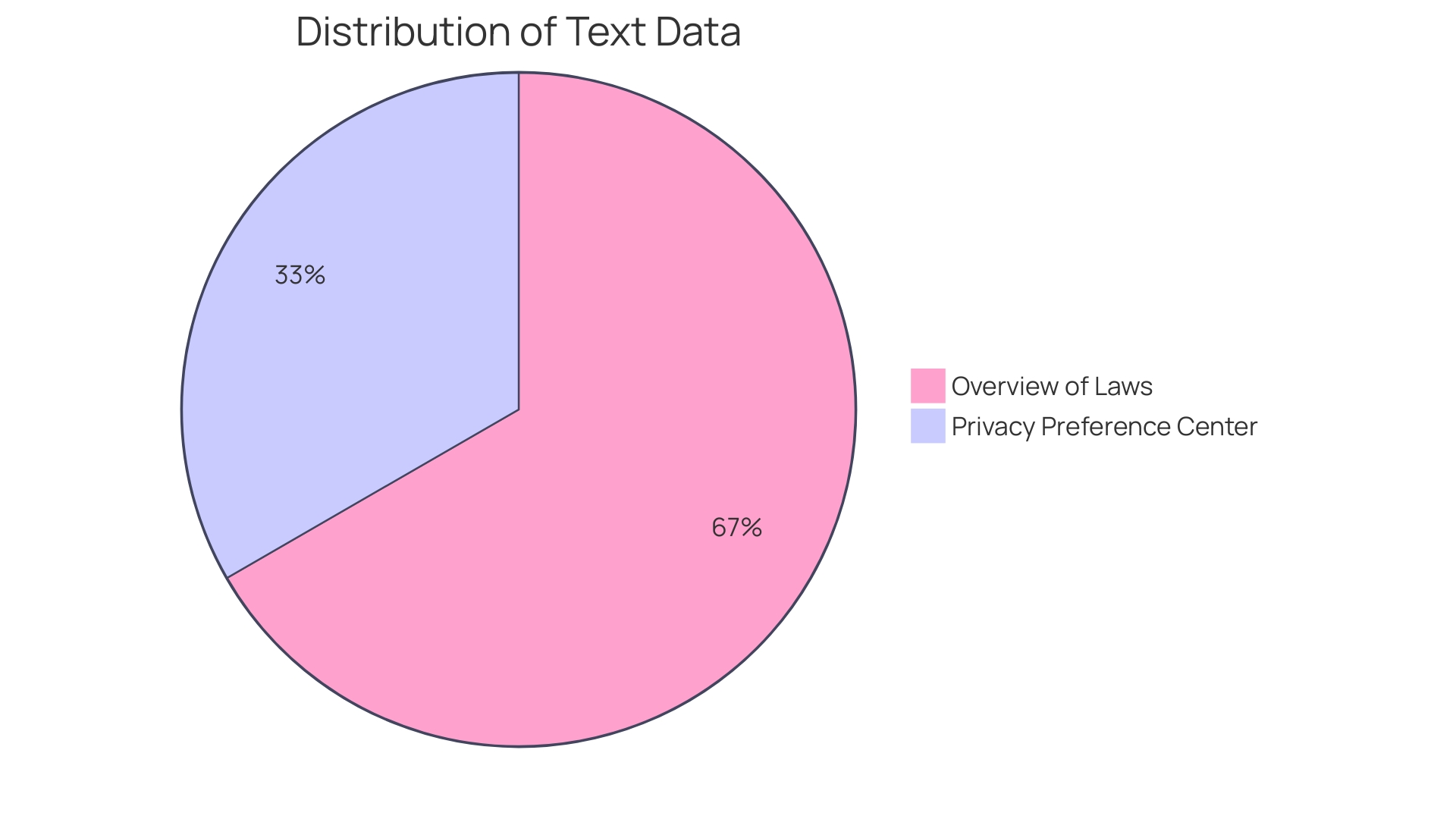
Navigating Land Use Regulations for Real Estate Investors
Navigating land use regulations is a pivotal aspect for real estate investors, with zoning laws, development standards, and approval processes at the core of successful property investment. Active participation in the regulatory process is recommended, given that regulations are mostly localized. Familiarity with local regulators and contributing to discussions can provide valuable insights and keep investors abreast of the latest developments. Engaging with community members can also be advantageous, as it can inform investment strategies and foster positive relationships that might facilitate future projects.
The importance of retaining experienced professionals such as real estate attorneys and tax accountants cannot be overstated. These experts can provide crucial guidance through the complexity of land use regulations, particularly in areas that are fraught with legal and tax intricacies. Case studies, like the purchase of an Akiya property in Chiba Prefecture, illustrate the bespoke nature of real estate investments and the importance of understanding local conditions and requirements.
Recent updates to the 2024 Real Estate Law and other code sections highlight the evolving nature of real estate regulations, emphasizing the necessity for investors to stay well-informed. As per the Mercatus Center at George Mason University, regulations like minimum lot size can have significant implications on housing affordability and market dynamics. The example of Dallas, Texas, where small-lot houses have been permitted despite prevalent regulations, showcases the potential for flexibility within the regulatory framework.
Investors should also be aware of the economic impact of regulations. Research indicates a correlation between regulatory stringency and elevated housing prices, underscoring the need for a thorough understanding of how these regulations can affect investment returns. By staying informed and engaging with the regulatory landscape, investors can better navigate the complexities of land use controls and identify opportunities for growth and profitability.
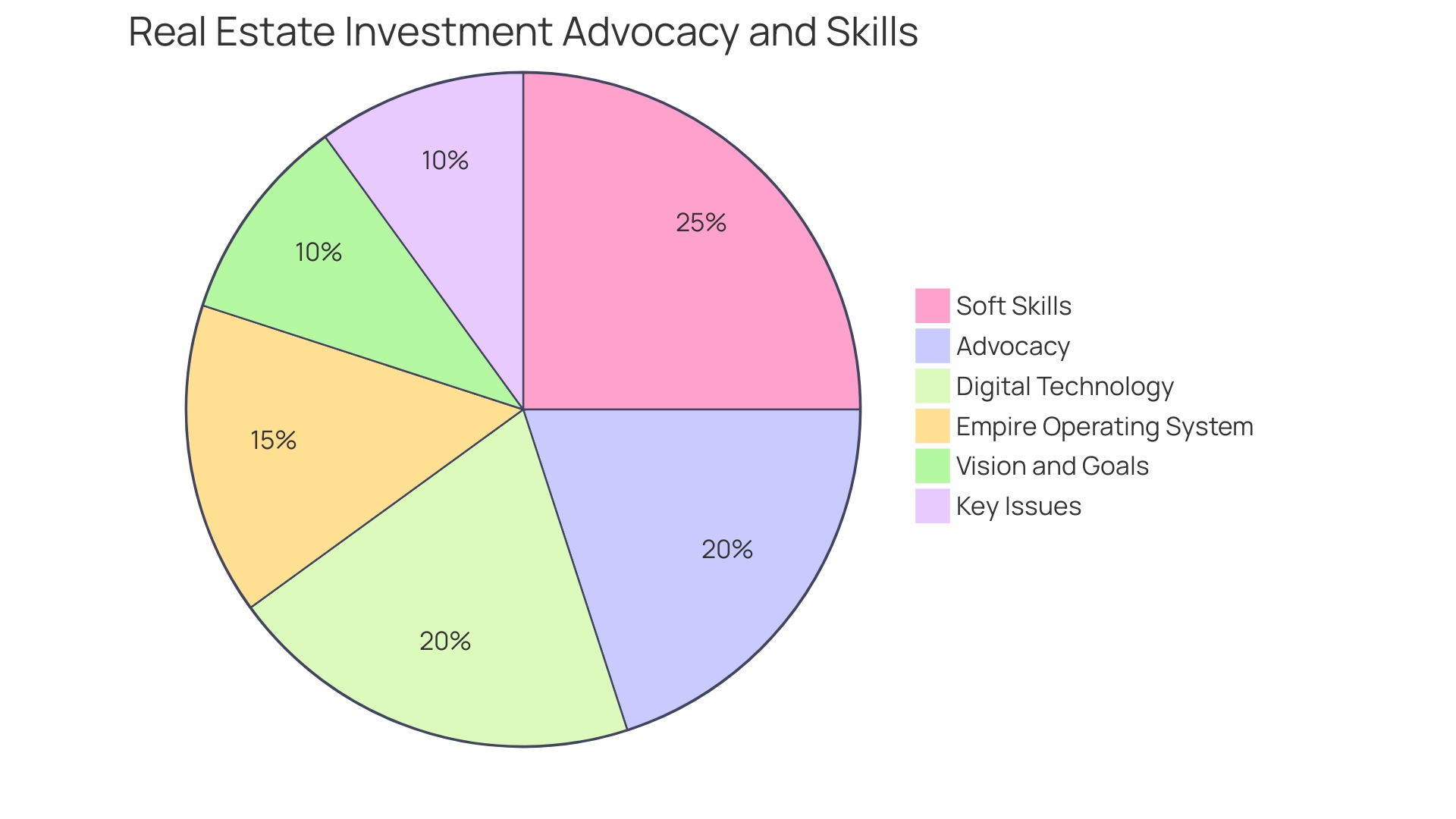
Conclusion
Zoning laws and land use controls shape urban environments and housing development. However, they can inadvertently restrict housing supply and increase costs. The urgent need for efficient land use is underscored by the housing shortfall and projections for future growth.
Zoning laws also impact global climate concerns, with urban sprawl contributing to greenhouse gas emissions. Compact, mixed-use developments are promoted to reduce travel distances, enhance energy efficiency, and conserve resources.
The Provincial Planning Statement of 2024 exemplifies a modern approach to land use planning, emphasizing housing provision, economic growth, and infrastructure planning while safeguarding the environment. Understanding and reevaluating zoning laws can help create equitable, vibrant, and sustainable urban environments.
Land use regulations directly affect housing availability and affordability. Modest reforms can increase housing supply, as seen in case studies like Auckland, New Zealand. Flexible zoning laws are needed to shape diverse communities and mitigate urban sprawl and segregation.
Enforcing land use regulations presents challenges, requiring a multidisciplinary approach and collaboration with stakeholders. The three-dimensional nature of property rights adds complexity to ownership and development.
Restrictive land use regulations can lead to a scarcity of affordable housing and deepen social disparities. However, zoning reforms driven by advocacy for inclusivity demonstrate a shift towards equitable outcomes.
For real estate investors, navigating land use regulations is crucial. Active participation, professional guidance, and staying informed are essential. Understanding the economic impact of regulations helps identify investment opportunities.
In conclusion, zoning laws and land use controls significantly influence cities and the environment. Thoughtful, flexible zoning laws are necessary for sustainable development and inclusive communities. Navigating land use regulations requires understanding and collaboration.
Discover how modest zoning reforms can increase housing supply and affordability.




